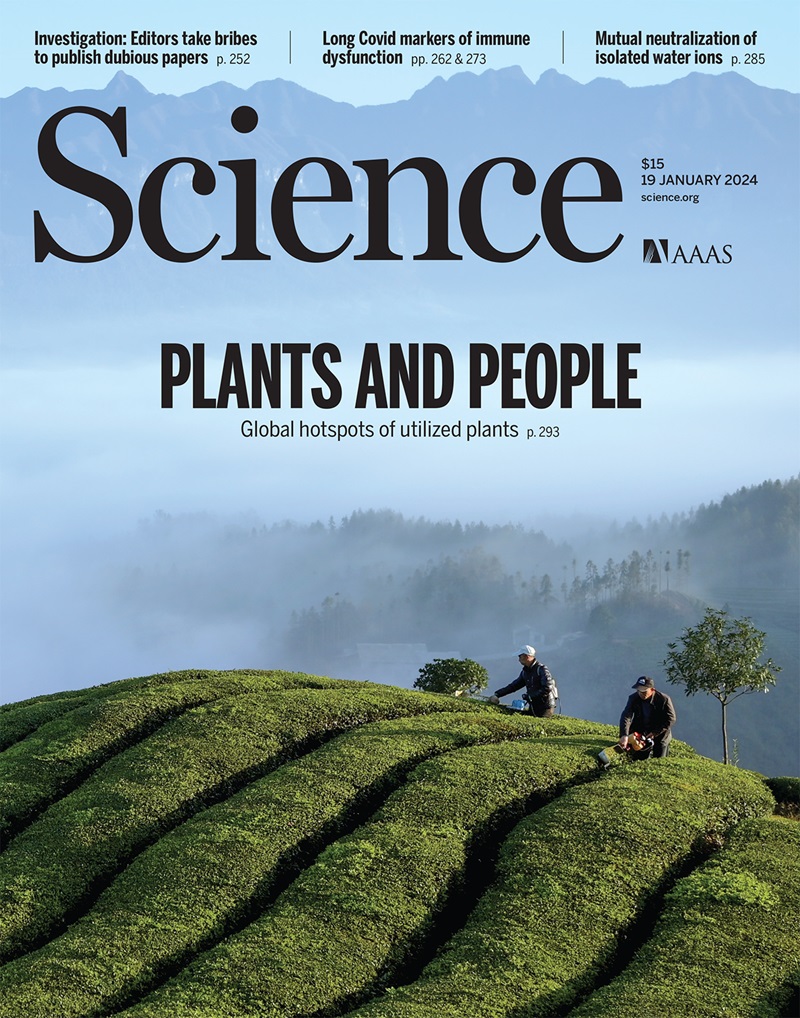功能性死亡折叠信号体的自下而上重建揭示了对聚合物稳定性和亲和性的要求
IF 45.8
1区 综合性期刊
Q1 MULTIDISCIPLINARY SCIENCES
引用次数: 0
摘要
由死亡折叠蛋白(DF)组成的蛋白质聚合物支架在免疫信号传导中对信号小体的形成至关重要。这些聚合物支架在信号转导中所需要的生物物理特性还没有明确的定义。在这里,我们设计了单组分DF信号体。我们发现功能取决于DF聚合物提供的稳定性,这也可以通过细菌DF结构域、合成纤维形成结构域和淀粉样蛋白序列来实现。这证明了聚合物稳定性和诱导性的重要性,而不考虑基序的来源。通过改变包含的TRAF6相互作用基序的数量,我们证明了亲和度是一个可调的属性,可以控制信号输出的幅度。这项工作提出了一个简化框架,通过调整聚合物支架的组装动力学、稳定性和亲和度来阐明所需的信号特性。本文章由计算机程序翻译,如有差异,请以英文原文为准。
Bottom-up reconstruction of functional death fold signalosomes reveals a requirement for polymer stability and avidity
Protein polymer scaffolds composed of death fold (DF) proteins are critical to the formation of signalosomes in immune signaling. The biophysical properties that these polymeric scaffolds require for signal transduction are not clearly defined. Here, we engineered single-component DF signalosomes. We found that functionality depends on the stability provided by the DF polymer, which could also be achieved with a bacterial DF domain, a synthetic filament-forming domain, and amyloid-like sequences. This demonstrates the importance of polymer stability and inducibility irrespective of the motif’s origin. By varying the number of included TRAF6 interaction motifs, we demonstrate that avidity is a tunable property that can control the amplitude of signaling outputs. This work lays out a reductionist framework to elucidate the required signaling properties through polymeric scaffolds by adjusting their assembly kinetics, stability, and avidity.
求助全文
通过发布文献求助,成功后即可免费获取论文全文。
去求助
来源期刊

Science
综合性期刊-综合性期刊
CiteScore
61.10
自引率
0.90%
发文量
0
审稿时长
2.1 months
期刊介绍:
Science is a leading outlet for scientific news, commentary, and cutting-edge research. Through its print and online incarnations, Science reaches an estimated worldwide readership of more than one million. Science’s authorship is global too, and its articles consistently rank among the world's most cited research.
Science serves as a forum for discussion of important issues related to the advancement of science by publishing material on which a consensus has been reached as well as including the presentation of minority or conflicting points of view. Accordingly, all articles published in Science—including editorials, news and comment, and book reviews—are signed and reflect the individual views of the authors and not official points of view adopted by AAAS or the institutions with which the authors are affiliated.
Science seeks to publish those papers that are most influential in their fields or across fields and that will significantly advance scientific understanding. Selected papers should present novel and broadly important data, syntheses, or concepts. They should merit recognition by the wider scientific community and general public provided by publication in Science, beyond that provided by specialty journals. Science welcomes submissions from all fields of science and from any source. The editors are committed to the prompt evaluation and publication of submitted papers while upholding high standards that support reproducibility of published research. Science is published weekly; selected papers are published online ahead of print.
 求助内容:
求助内容: 应助结果提醒方式:
应助结果提醒方式:


